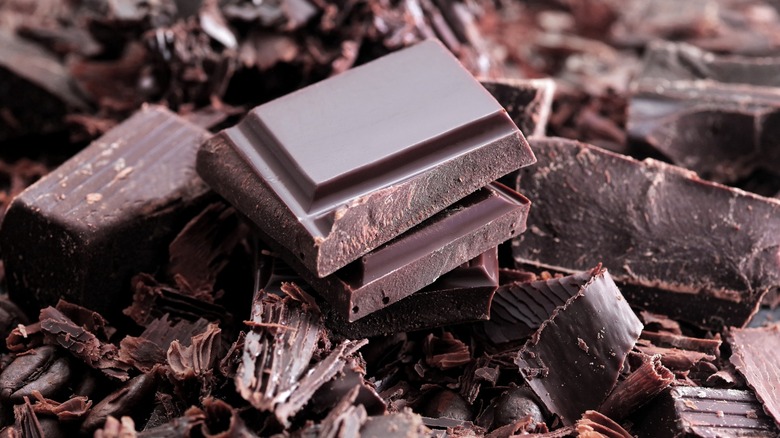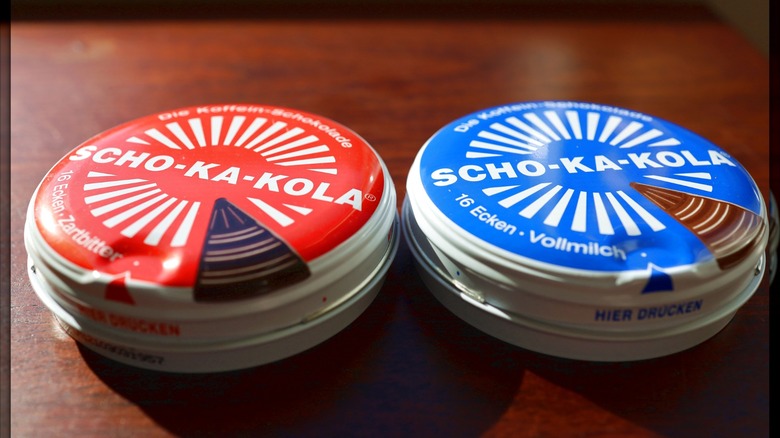How Caffeine-Infused Chocolate Became A Wartime Necessity
We may receive a commission on purchases made from links.
Food items can sometimes take a long and strange path to become the staples or traditional foods that they are today. Take for example the tradition of making and enjoying Easter treats, where the chocolate bunny is thought to have originated in Germany before eventually making its way to America. Or take any number of foods that used to be signs of wealth, but nowadays merely stand as regular grocery store shelf items. One example of such a staple over in Germany is caffeinated chocolate. Celebrated brand Scho-Ka-Kola has been around since the 1930s, but it has history as being a rationed item for soldiers during the Second World War.
Diligence and awareness are naturally key attributes to have and maintain during wartime, and the German military knew this. This is why Germany issued portions of caffeinated chocolate — specifically Scho-Ka-Kola — to troops. The caffeine boost provided by this chocolate was thought to increase awareness and alertness in case any potential threats arose. In fact, it was such a commonly-issued item among the Luftwaffe that it garnered the name "aviator chocolate," although it's reported that other divisions of the military still received their share of the peppy cocoa product. Even if it wasn't invented to be used by military personnel, Scho-Ka-Kola certainly ingrained itself as a necessity at that time — though thankfully you can enjoy it with far less at stake these days.
Scho-Ka-Kola goes back to before the war
This caffeinated chocolate company might have part of its history tied to World War II, but don't let that fool you — it was invented before the war even started. Mixing chocolate and coffee is nothing new — we still do it today by making boxed brownies with coffee and by mixing cocoa powder straight into our coffee. The two ingredients really complement each other. Scho-Ka-Kola mixed these together in 1935, but pumped up the pep with kola nuts, a seed that contains yet more caffeine. In 1936, this chocolate was even branded as an ideal food for athletes competing in that year's Olympic games. It wasn't until the outbreak of the Second World War that Scho-Ka-Kola became associated with the military.
The positive side of being closely related to military dispersal is that your brand could become beloved by many, many soldiers and their families both during the war and after it. The downside is that if your side is defeated, your brand gets put into serious danger. This happened to Scho-Ka-Kola, which had much of its grounds destroyed in the late stages of the war. If that wasn't enough, blockades in the early stages of the Cold War briefly prevented cocoa imports. Still, the company managed through each crisis, and Scho-Ka-Kola still produces its hyper-stimulating chocolate to this day. If you're looking for a pick-me-up or just the simplest way to feel like a fighter pilot, a wedge of caffeinated chocolate should do the trick.

